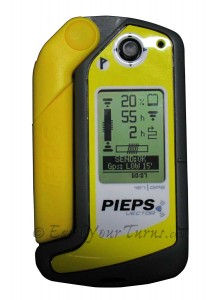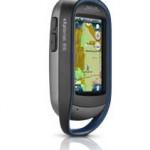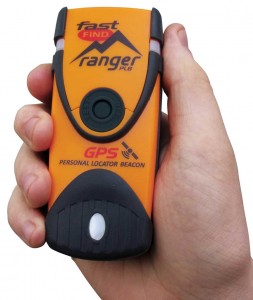Regular readers know I’m usually slow to adopt technology. When it comes to telemark bindings I’m on the bleeding edge, but otherwise, I’m slow to adopt. This is especially true in the electronics realm. It isn’t that I don’t know the conveniences and power of electronic devices in our lives, but the number of options they provide quickly becomes overwhelming. More than anything the speed at which new technology replaces recent or old technology makes me wary because it replaces skills with convenience. The result is a loss in the depth of understanding in many subjects that often is woven through history which is summarily replaced by mesmerizing gadgetry.
Nonetheless, in the virtual worldwide web that same technology is a tool that can embellish the illusion of the backcountry in the blogosphere. The recent OR summer show was the perfect time to catch up on since there aren’t any irresistable toys like skis and boots to vie for attention.
Keep in mind I’m only scratching the surface here since I was in catch up mode for much of my time, but look for future reviews with more depth.
GPS w/Magellan
Headlamps
One thing that was evident after talking to just a few headlamp brands was the ongoing improvement in LED efficiency. Every model that had been tweaked since last year was touting almost twice the lumen output for the same price.

Pieps Vector uses GPS technology and a rechargeable Li-ion battery. This screen shows the percent battery life, and how many hours of transmit or searching that will provide.
Pieps’ Vector appears to finally be ready for delivery this fall. It is the first avalanche transceiver to not only offer GPS functionality, but it incorporates it in how it searches for signals, and it comes with a rechargeable Li-ion battery. More details on everything it claims to do shortly. Pieps didn’t invest all that energy in utilizing GPS just for their avalanche transceiver. It turns out they will also be joining the fray in the global emergency locator business with their Iridium GlobalFinder product that uses that same shell as the Vector, only without any avalanche transceiver functions and a host of communication features including the ability to compose and send a text message. Again, more on that later.
SPOT
While I’m on the subject of emergency locator beacons I took the time to get up to speed with GlobalStar Communications who offer the SPOT satellite GPS messenger system. You probably knew this but I didn’t. They offer a SPOT unit called the SPOT Connect that uses an iPhone as the interface. Combined with a free app you can use the iPhone to compose your communication message, or trigger a search. In case the iPhone runs out of juice, there is a fail-safe button to call in the troops.
There is yet another option available in the personal locator beacon world. The FastFind Ranger is essentially the same sort of product as the ACR emergency locator beacon. Unlike SPOT it does not communicate with low-orbit satellites. This means it has a more reliable connection, especially in deep canyons where a signal might be blocked, or if you are far from the equator. As ever, more on this later. Unlike ACR it doesn’t require an annual subscription to plugged in to the satellite rescue network.
USB Charger
My fave electronic gadget was the ReVolt from Black Diamond, a simple 5-volt USB charger that plugs into the cigarette lighter jack in your car. Light, small, and useful. Only time will tell if it can survive years or months before dying or, more likely, getting lost.
© 2012




2 comments
oooh I like the Pieps Vector. Wonder how much? Will this be the most expensive beacon on the market?
No question, it will be the most expensive avy beacon on the market. However, it might prove to be the most useful. Not to mean a better avalanche beacon even though some might think so (me included), but because it can be useful as a GPS device for recording your whereabouts and flagging waypoints. Most beacons are rescue devices and insurance only. Pieps Vector will be that AND a navigation tool. OTOH – it may just be a colossal compromise.